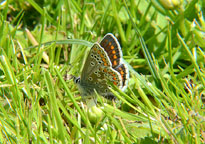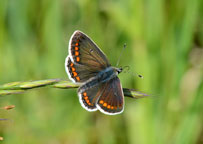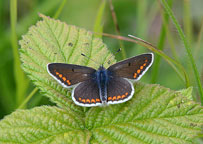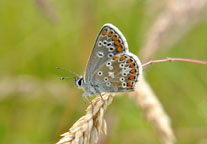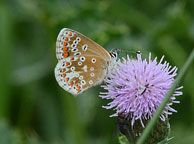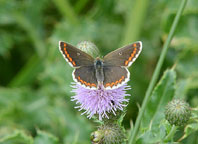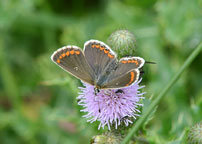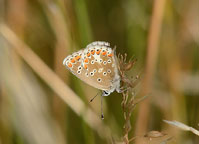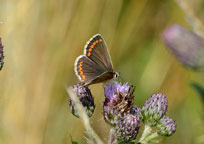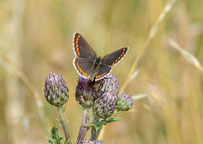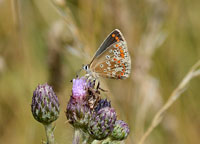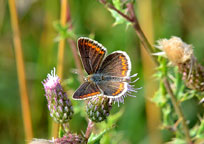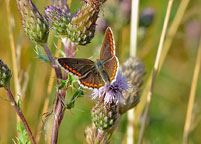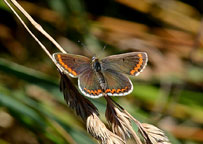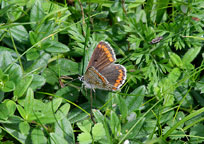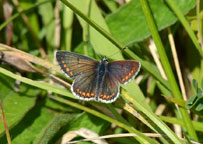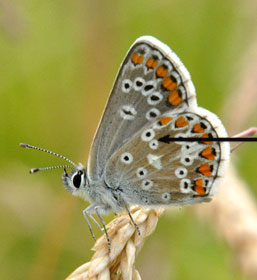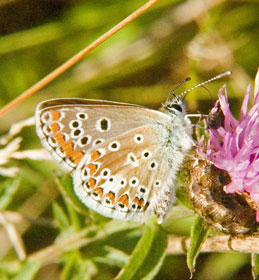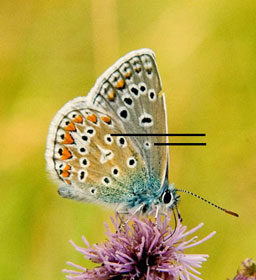The Brown Argus was one of our more common butterflies in 2010, becoming scarcer in 2011 and 2012. In Great Yeldham the adults can be seen feeding on Thistle, Knapweed and Water Mint flowers. In August 2015, in late afternoon to early evening I revisited a part of the paddock at Roseland House where they were flying earlier in the day. In just one small area of about 3 square yards I could see seven Brown Argus all at once perching on tall grass stems, sometimes taking a short flight before landing back in the group. Mostly the wings were closed but from time to time a few would open up to take some warmth from the sun. I have yet to find another perching site in the meadow.
It has two broods per year, flying in May to June, and early July to September. Overwinters as a caterpillar.
Brown Argus in flight are usually more busy and erratic than Common Blue, quite close to the ground and not far above the foliage. Often, briefly, in little groups of two or three together.
Female Common Blues can be similar to Brown Argus, but are not usually quite so uniformly dark brown.
The undersides of the forewings of the Brown Argus lack a spot on the forewing between the main central spot and the wing-base.
On the undersides of the leading edge of the underwing, the second and third spots outwards are close together if not above each other (like a colon) in the Brown Argus, but further apart in the Common Blue. If in doubt double check with the lack of extra spot on the fore-wing.
Brown Argus are usually noticably smaller than Common Blues but this character cannot be relied upon as is shown by an extra small Common Blue female in South's plate 106.
The illustrations in South's 'Butterflies of the British Isles' are not particularly clear by modern standards. They are all of pinned specimens, but by their number of examples give a good indication of the amount of variation to be expected in the spotting of the undersides of the blue butterflies.
The larval foodplants are usually given as Rock Rose, a plant of chalky downs. Butterflies of Essex notes that in this county, where we lack Rock Rose, the main foodplants are Storksbill and Cranesbill. Long Stalked Cranesbill, Geranium columbianum is scattered in the grass all over the paddock at Roseland House.
